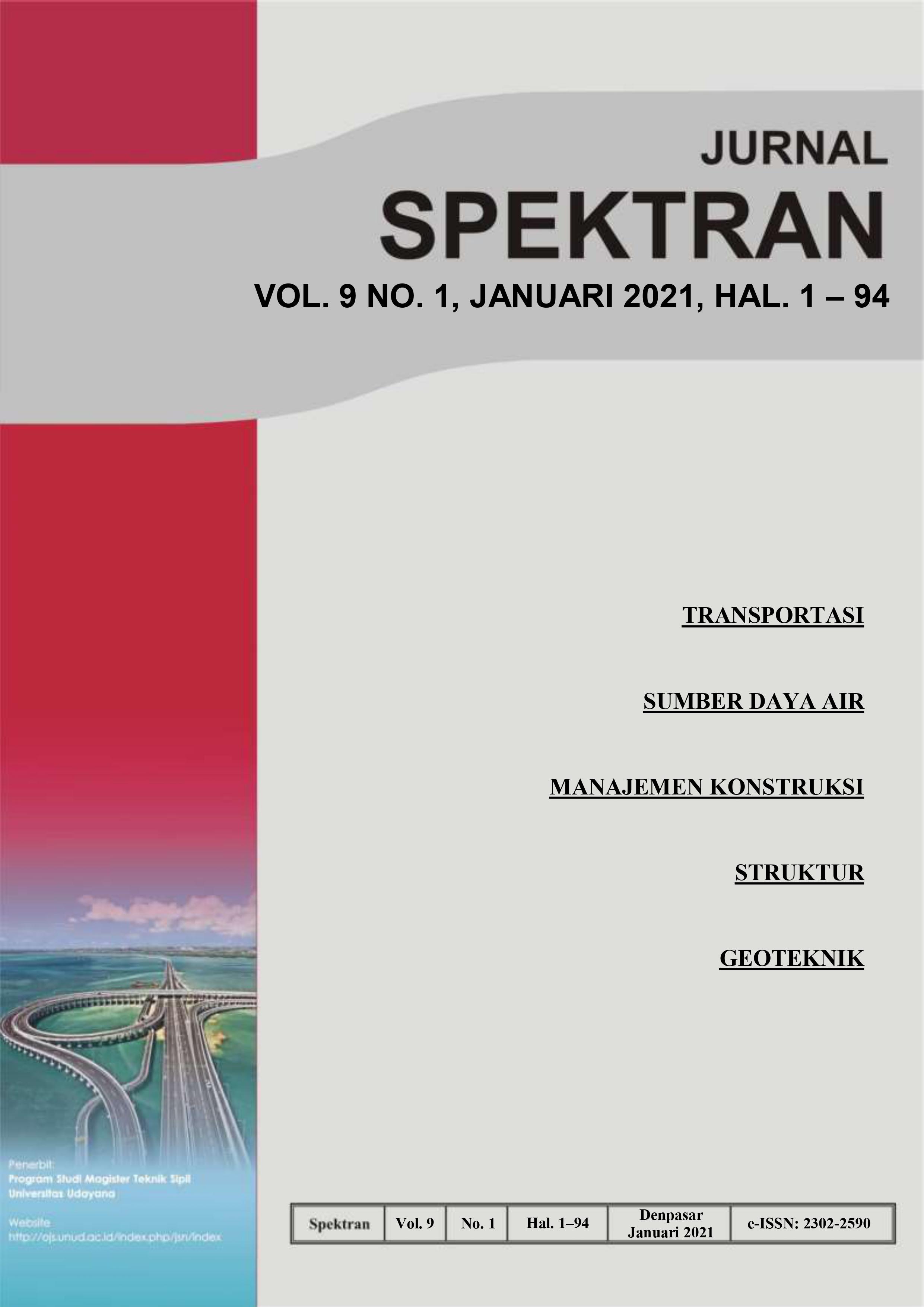TINGKAT IMPLEMENTASI DAN HAMBATAN ADOPSI BUILDING INFORMATION MODELING PADA PELAKU PROYEK KONSTRUKSI DI BALI
Abstract
Many countries have established implementation strategies for the use of BIM in construction projects which have resulted in the widespread adoption of BIM. To catch up, the Ministry of PUPR has launched the Indonesia Digital Construction Roadmap 2017-2024 through 4 stages, namely the Adoption, Digitalization, Collaboration, and Integration stages. However, currently at the Adoption stage of the Roadmap, it is still focused on only a few PUPR infrastructure projects. This is due to problems such as the unavailability of policies and regulations for implementing BIM for the entire PUPR infrastructure sector, the lack of mastery of BIM from both Users and Service Providers, the project scale is not yet massive so that the price of BIM software is felt to be still burdening the Provider. This study aims to investigate the mastery of BIM through a study of the level of use, implementation, and identification of the dominant barriers to BIM adoption, especially for construction project actors in Bali. This research is expected to help construction industry practitioners to understand the challenges of BIM adoption in Bali. Data collection was carried out by survey method using a questionnaire. Respondents were selected using the purposive sampling method, namely experts in construction projects in Bali. The method of analysis is descriptive statistics which includes central tendency measurement, variability measurement, and the Relative Importance Index (RII). The survey results from all respondents showed that the adoption rate of BIM for construction project actors in Bali was 19%. Level of BIM implementation of construction project actors in Bali were 89% at BIM level 1 and 11% were at BIM level 2. The dominant obstacles in BIM adoption are the high cost of adoption, lack of experts, lack of government role in encouraging BIM adoption, difficulty changing work processes and there is no standard and protocol in applying BIM in the project.
Downloads
References
Azhar, S., Hein, M., & Sketo, B. (2008). Building Information Modeling (BIM): Trends, Benefits, Risks, and Challenges for the AEC Industry. 44th ASC Annual Conference (on CD ROM). Auburn, Alabama.
BuildingSMART Alliance. (2007). National BIM Standard - United States V1 P1. National Institute of Building Sciences.
Eastman, C., Teicholz, P., Rafael, S., & Kathleen, L. (2008). BIM Handbook: A Guide to Building Information Modeling for Owners, Managers, Designers, Engineers and Contractors. Wiley Publishing.
Gu, N., & London, K. (2010). Understanding and Facilitating BIM Adoption in the AEC industry. Automation in Construction, 19(8), 988-999.
Gu, N., Singh, V., London, K., & Taylor, C. (2008). BIM: Expectations and a Reality Check. 12th International Conference on Computing in Civil and Building Engineering & 2008 International Conference on Information Technology in Construction. Beijing: Tsinghua University Press.
Kiviniemi, A. (2013). Public Clients as the Driver for BIM Adoption - Why and how UK Government wants to change the construction industry? Confrence at Clareon Hotel Arlanda. Swedia: Open BIM.
Kusumartono, dkk, F. H. (2018). Panduan Adopsi BIM dalam Organisasi. Jakarta: Pusat Litbang Kebijakan dan Penerapan Teknologi, Kementrian PUPR.
Pusdiklat Sumber Daya Air dan Konstruksi Kementrian PUPR. (2018). Modul 5: Pemodelan 3D, 4D, 5D, 6D dan 7D serta Simulasinya dan Level of Development (LoD). Jakarta: Kementrian Pekerjaan Umum dan Perumahan Rakyat.
Rayendra, & Soemardi, B. (2014). Studi Aplikasi Teknologi Building Information Modeling untuk Pra-Konstruksi. Simposium Nasional RAPI XIII. Surakarta: Fakultas Teknik Universitas Muhammadiyah Surakarta.
Rizal, S. (2011). Changing roles of the clients, architects and contractors through BIM. Engineering, Construction and Architectural Management, 18(2), 176-187.
Thomson, D., & Miner, R. (2006). Building Information Modeling- BIM: Contractual Risks are Changing with Technology. FWHT - Construction Law Briefing Paper.
Vaza, H. (2019). Rencana Pengembangan Nasional Roadmap BIM di Indonesia. BIM National Strategy Workshop. Jakarta: Kementrian Pekerjaan Umum dan Perumahan Rakyat.




